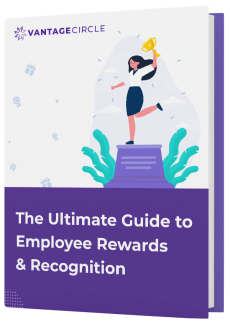Talent Acquisition: Process and Best Practices

The corporate world that we know has evolved with time and has seen some significant changes which have uplifted the present scenario of how we work.
Employees have adapted to their surroundings and used their talent and skills as their most potent weapon to thrive. But how do organizations acquire talented individuals that become so competent and responsible? One major driving factor for this has been the necessary understanding of talent acquisition and proper implementation.
Another critical aspect to keep in mind is that one should not confuse talent acquisition and recruitment because both of these words have a significant difference.
How can an organization make the most out of their talent acquisition programs? Let us have a look at it.
Difference between Talent Acquisition and Recruitment
While both of the words have the same functioning, the approach is quite different.
When we talk about recruitment, it is a tactical approach that focuses on filling up vacancies in the organization.
However, talent acquisition is an ongoing strategic approach that focuses on finding executives, leaders, or specialists to help the organization in the future. Its main target is to acquire skilled candidates on a long term basis.
Companies have to think strategically about which positions will require the appropriate approach to talent acquisition and how will they attract talent that will dynamically change the workforce.
Statistics you need to know.
-
50% of employees believe that Artificial Intelligence will play an important role in talent acquisition.
-
84% of employees will likely leave their current job for an organization with a better reputation.
-
More than 79% of job seekers now consider an organization’s mission statement before applying for a job.
-
Candidates are 4x more likely to consider your organization if you provide them with constructive feedback.
-
70% of the global workforce is passively job searching, while 30% are active job seekers.
-
Compensation, professional development, and work-life balance are the essential factors in accepting a new job.
The Talent Acquisition Process
Talent acquisition requires a process that will go on for several months. The method includes the below-mentioned steps:
1. Marketing and Lead Generation
A successful and eye-catching marketing campaign that will display your need for highly-rated talent is quite essential. As hiring managers, you will want to spread the word that your organization requires skilled individuals that are the right fit for the job. Go for social events where you can network with specialists in your industry and build relationships.
By doing so, you will be able to do proper marketing of your needs, which, in return, will generate a large pool of skilled candidates. Furthermore, you will streamline your hiring process for the future and make a presence in your niche.
2. Attracting and making your presence known
The second step includes how you can attract and further recruit them before heading on to the next phase. To successfully execute it, you will have to build a strong company brand to promote your company culture, the exclusive benefits, and why the organization stands out from the rest.
Furthermore, to cement your brand’s presence, providing an excellent candidate experience will generate positive feedback and keep following up with your potential candidates to approach them soon and recruit them.
3. Interview and Assessment
After attracting and recruiting your preferred potential candidate, the next step involves their interview process. Before heading over to the interview, prepare yourself with the appropriate questions to ask a candidate. The questions should target the crucial aspects of the position for which you are conducting the interview.
The potential candidate’s ability to answer them will determine their credibility and ability to take up the position for an extended period. Also, assess them based on their skills to solve problems put in front of them and how quickly they can adapt to different situations. Look out for opportunities as well, where you can provide them with constructive criticism to improve themselves in the near future that will boost their confidence.
4. Selection and Recruitment
The selection process will involve the managers to pick out the best candidates that fit the job description. Potential candidates need to have extraordinary skills, the experience that will help the organization, and the ability to lead in the future before recruiting them.
Also, do keep in mind to provide them with the necessary information about the organization before joining, giving them a headstart on how to prepare for their first day at the office.
5. Onboarding
The last step of the talent acquisition process involves the onboarding of an employee. We all know what exactly onboarding means and how it plays a vital role in the talent acquisition team.
It involves making the employees familiar with the culture and the organization’s long-term objectives. The onboarding process is crucial because it will make or break a new employee relationship in the organization, which is why streamline the process and make it a smoother experience to blend into the culture without any hassle.
Best Practices for Talent Acquisition
1. Prioritize What You Need
Before you head out to acquire exceptional talent for the organization, you must prioritize the areas in which you will need them. Identify what skills and competencies you will require to fill up the desired position and subsequently follow through with the large pool of talent. Target your niche and approach with a plan.
Hiring the right candidate is much more comfortable with a proper plan and structure.
2. Keep Track of the Talent Pool
It is always vital to track all the shortlisted candidates in a spreadsheet or use organized tools for future reference. Sidetrack them whenever possible and keep them updated about upcoming open positions. Go through the talent acquisition process and hire the required talent whenever the organization feels it right and makes the system’s best use. It saves up time and money while acquiring the best talent without any hassle.
3. Invest in Succession Planning
Organizations themselves have their talents; however, they are hidden from the eyes of the managers. It is only with time that they come into existence with their exceptional skills and qualities. And the best part is that management can train them and prepare them for the executive positions without the headache of hiring someone new.
It is basically internal hiring, which is cost-effective and gives the organization a competitive edge. Succession planning helps to acquire top talents within the company and ensures a smoother workflow because the employees know the system and its culture.
Learn More: Succession Planning- What Managers need to know and its Benefits
4. Get Everyone on Board
Talent acquisition should not stop with the HR managers or the talent acquisition team. Get everyone involved in the organization, from the higher-ups to the employees. Take the help of employee referral programs provided that you incentivize it to encourage the employees.
Make use of your employee advocacy program if you have implemented it. Do make sure that your employees know what position you are hiring for, what skills are required, and the objectives an organization wants to achieve. When everyone gets on board, you will find competent candidates faster.
5. Talent Management
Another aspect of talent acquisition is to manage them after their recruitment. The future prospects have a desire and hunger to always learn and improve their skills. Which is why it is important to consider providing them the necessary training and developmental programs them will help them grow.
Furthermore, talent management practices will also ensure that their morale is always at its peak which is encourage high levels of engagement and increase productivity.
Related Article: Everthing About Talent Management in 2020
Summing it Up
Acquiring top talents for an organization is not the easiest thing to do as it requires in-depth planning and prompt execution. However, even with all the planning, there are chances that you might miss out on some top notch talent if you are not aware of their presence. This is why talent acquisition is necessary because it progressively works on targetting candidates who can become an asset for the organization in the possible future.

Vantage Circle is a simple AI-powered Rewards & Recognition Platform for upgrading your employee experience and engagement for better productivity.





